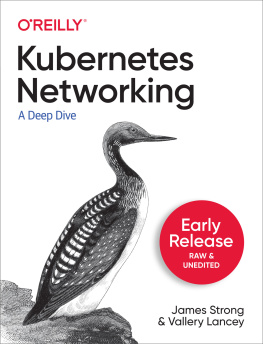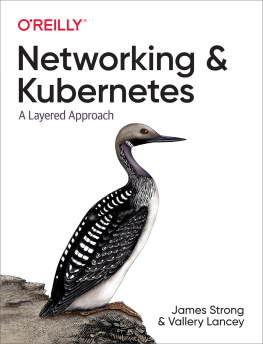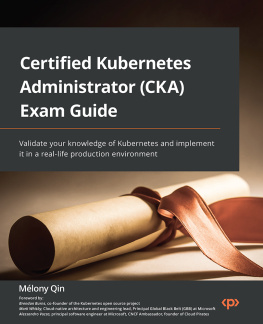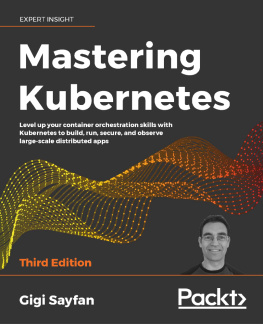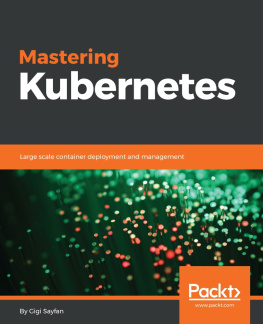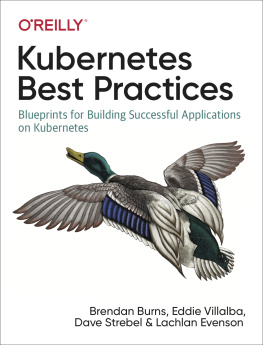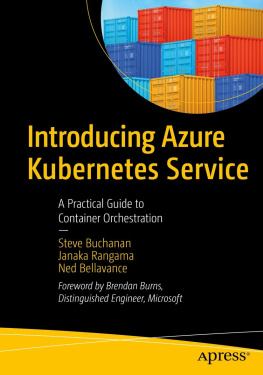James Strong - Kubernetes Networking
Here you can read online James Strong - Kubernetes Networking full text of the book (entire story) in english for free. Download pdf and epub, get meaning, cover and reviews about this ebook. year: 2021, publisher: OReilly Media, Inc., genre: Home and family. Description of the work, (preface) as well as reviews are available. Best literature library LitArk.com created for fans of good reading and offers a wide selection of genres:
Romance novel
Science fiction
Adventure
Detective
Science
History
Home and family
Prose
Art
Politics
Computer
Non-fiction
Religion
Business
Children
Humor
Choose a favorite category and find really read worthwhile books. Enjoy immersion in the world of imagination, feel the emotions of the characters or learn something new for yourself, make an fascinating discovery.
- Book:Kubernetes Networking
- Author:
- Publisher:OReilly Media, Inc.
- Genre:
- Year:2021
- Rating:5 / 5
- Favourites:Add to favourites
- Your mark:
- 100
- 1
- 2
- 3
- 4
- 5
Kubernetes Networking: summary, description and annotation
We offer to read an annotation, description, summary or preface (depends on what the author of the book "Kubernetes Networking" wrote himself). If you haven't found the necessary information about the book — write in the comments, we will try to find it.
Kubernetes Networking — read online for free the complete book (whole text) full work
Below is the text of the book, divided by pages. System saving the place of the last page read, allows you to conveniently read the book "Kubernetes Networking" online for free, without having to search again every time where you left off. Put a bookmark, and you can go to the page where you finished reading at any time.
Font size:
Interval:
Bookmark:

by James Strong and Vallery Lancey
Copyright 2021 Strongjz tech and Vallery Lancey. All rights reserved.
Printed in the United States of America.
Published by OReilly Media, Inc. , 1005 Gravenstein Highway North, Sebastopol, CA 95472.
OReilly books may be purchased for educational, business, or sales promotional use. Online editions are also available for most titles (http://oreilly.com). For more information, contact our corporate/institutional sales department: 800-998-9938 or corporate@oreilly.com .
- Acquisitions Editor: John Devins
- Development Editor: Melissa Potter
- Production Editor: Daniel Elfanbaum
- Interior Designer: David Futato
- Cover Designer: Karen Montgomery
- Illustrator: Kate DUllea
- September 2021: First Edition
- 2021-03-01: First Release
See http://oreilly.com/catalog/errata.csp?isbn=9781492081654 for release details.
The OReilly logo is a registered trademark of OReilly Media, Inc. Kubernetes Networking, the cover image, and related trade dress are trademarks of OReilly Media, Inc.
The views expressed in this work are those of the authors, and do not represent the publishers views. While the publisher and the authors have used good faith efforts to ensure that the information and instructions contained in this work are accurate, the publisher and the authors disclaim all responsibility for errors or omissions, including without limitation responsibility for damages resulting from the use of or reliance on this work. Use of the information and instructions contained in this work is at your own risk. If any code samples or other technology this work contains or describes is subject to open source licenses or the intellectual property rights of others, it is your responsibility to ensure that your use thereof complies with such licenses and/or rights.
978-1-492-08158-6
[LSI]
With Early Release ebooks, you get books in their earliest formthe authors raw and unedited content as they writeso you can take advantage of these technologies long before the official release of these titles.
This will be the 1st chapter of the final book. Please note that the GitHub repo will be made active later on.
If you have comments about how we might improve the content and/or examples in this book, or if you notice missing material within this chapter, please reach out to the editor at .
In the beginning
The Internet we know today is vast, with cables spanning the oceans, mountains removed toconnect cities for lower latency. Barrett Lyons Mapping the Internet, shown in Figure 1, shows just how vast it trulyis. In that image is illustrated all the connections between networks of networks that make up the Internet. Thepurpose of the network is to exchange information from one system to another system. That is an enormous ask of a distributed globalsystem, but it was not always global; to begin with, it started as a conceptual model and slowly was built up overtime, to the behemoth in Barretts visually stunning artwork. There are many factors to consider when learning aboutnetworking such as the last mile, the connectivity between a customers home, and the Internet Service Providersnetwork; all the way to scaling up to the Geopolitical landscape of the Internet. The Internet is integrated into thefabric of society. In this book, we will discuss how the networks operate and how Kubernetes abstracts it for us.

Capital I, Internet indicates the network of networks that make up what we describe as the Internet. Lower case iinternet is the connectivity of internal, private networks.
Table 1-1. A brief history of networking| Year | Events |
|---|---|
1969 | ARPANET First connection test |
1969 | Telnet 1969 RFC 15 drafted |
1971 | FTP RFC 114 drafted |
1973 | FTP RFC 354 drafted |
1974 | TCP RFC 675 Vint Cerf, Yogen Dalal, and Carl Sunshine Drafted |
1980 | Development of Open Systems Interconnection Model Begins |
1981 | IP RFC 760 Drafted |
1982 | NORSAR and University College London left the ARPANET and began using TCP/IP over SATNET |
1984 | ISO 7498 Open Systems Interconnection Reference Model, OSI model, published |
1991 | Al Gore helps pass the National Information Infrastructure (NII) bill passed |
1991 | First Version of Linux released |
2015 | First version of Kubernetes released |
In its earliest forms, networking was Government ran or sponsored; in the United States the Departmentof Defense sponsored the Advanced Research Projects Agency Network, ARPANET (well before Al Gores time in politics).In 1969 ARPANET was deployed in UCLA, Argumentation Research Center at Stanford Research Institute, University ofCalifornia Santa Barbara, and the University Of Utah School of Computing. Communication between nodes was not completeduntil 1970, when they began using the Network Control Protocol, NCP. NCP led to the development and use of the firstcomputer-to-computer RFCs, Telnet and FTP.
The success of ARPANET and NCP, the first protocol to power it, led to NCPs downfall. It could not keep with thedemands of the network, and variety of networks connected. In 1974 Vint Cerf, Yogen Dalal, and Carl Sunshine begandrafting RFC 675 for Transmission Control Protocol, TCP. TCP would go on to be the standard for network connectivity.TCP allowed for exchanging packets across different types of networks. In 1981 IP, RFC 791, helped break outresponsibilities of TCP into a separate protocol increasing the modularity of the network. The following years manyorganizations, including the DOD, adapting TCP as the standard and by January 1, 1983, TCP/IP become the onlyapproved protocol on the ARPANET, replacing the earlier NCP protocol because of versatility and modularity.
A competing standards organization, the International Standards organization (ISO), developed and published ISO 7498Open Systems Interconnection Reference Model, the OSI model. With its publication also came the protocols tosupport it. Unfortunately, the OSI model protocols never gained traction and lost out to the popularity of TCP/IP.The OSI model is still an excellent learning tool for understanding the layered approach to networking.
1991 Al Gore invents the Internet, really he helped pass the National Information Infrastructure (NII) bill passed,which helped lead to the creation of the Internet Engineering Task Force, IETF. Nowadays standards for the Internetare under the management of the Internet Engineer Task Force, an open consortium of leading experts and companies inthe field of networking, like Cisco and Juniper. Requests for Comments, RFC, are published by The Internet Society,and the Internet Engineering Task Force. RFCs are prominently authored by individuals or groups of engineers andcomputer scientists, and they detail their processes, operations, and applications to the Internets functioning.
Font size:
Interval:
Bookmark:
Similar books «Kubernetes Networking»
Look at similar books to Kubernetes Networking. We have selected literature similar in name and meaning in the hope of providing readers with more options to find new, interesting, not yet read works.
Discussion, reviews of the book Kubernetes Networking and just readers' own opinions. Leave your comments, write what you think about the work, its meaning or the main characters. Specify what exactly you liked and what you didn't like, and why you think so.

